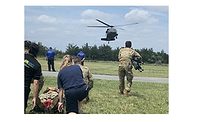When Steven Wagner joined Indiana-based Hendricks Regional Health two years ago as its Manager of Safety and Security, the department was run on 99-percent paper, with no electronic method of tracking security officers’ activity or sharing information across shifts except for a sporadically updated blog without a search function.
“Everything (security officers) did would go undocumented,” says Wagner, “and there was no way to have a daily activity database.”
There were approximately 4,000 blog entries in 2016, he says, and 50 percent of those should have been better documented as major incidents within the health system, which includes around 15 hospitals and healthcare facilities in Indiana.
“When I came in, I saw they were woefully unprepared, flying by the seat of their pants to keep information flowing in the hospital,” Wagner adds. “We needed a way to determine what (officers) were doing and how often.”
Wagner started to research guard tour programs and technological solutions, eventually discovering TrackTik Software, which he could customize to Hendricks Regional Health’s specific needs.
The software enables Wagner to track guards’ activity, document the type of activity, track guard tours, record monthly fire extinguisher checks though barcode scanning, and document guards’ training. Security officers can track rates of service calls as well, such as assisting with jump-starts or lockouts in the parking lots, escort services or trouble with patients or guests. Officers can include photos and videos with their incident reports, and all the data is searchable.
“Unless it was something another shift would need to handle, these tasks wouldn’t have been recorded at all before we got this system,” Wagner says.
The TrackTik software also gives Wagner the ability to recall data from the system to provide metrics from each facility or the system as a whole. If there’s a major incident that requires a response, the system can send an automatic email to Wagner.
Security officers use cellphones to interact with the system, and Wagner can review daily logs and incident reports from his computer, and he can send comprehensive documents on security-related issues to the healthcare system’s management team. Wagner can pull up rates of different types of incidents, or even track individual security officers’ performance and history.
Within the first 15 months of use, there were more than 38,000 entries in the system. Discovering exactly how much officers were doing on a daily basis put Wagner in a good position to request additional staff, and the security department went from having 12 officers to 26. The system also uncovered which times or areas are the busiest, and this information enables Wagner to increase manpower accordingly.
“The one thing that sold me on it above and beyond was how customizable and expandable the system was,” he says. “We went from 99-percent paper to 95-percent paperless.”



